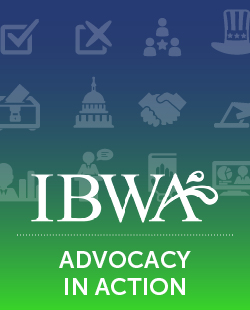Hawaii Bottle Bill Summary
Hawaii Bottle Bill Summary
Summary of Conference Draft of
Hawaii Beverage Container Bill
Reference: HB 1256, HD 2, SD 2, CD 1 (approved by Conference)
Legislative Language
- Establishes a deposit fee and a 5¢ refund value on beverage containers made of glass, metal, PET, and HDPE containing 64 ounces or less of:
“. . . beer, ale, or other drink produced by fermenting malt, mixed spirits, mixed wine, tea and coffee drinks…, soda, or noncarbonated water, and all nonalcoholic drinks in liquid form…”
Concentrates, flavorings, medicines, nutritional supplements, powders, milk, and dairy-derived products are exempt.
- Deposit fee
- Starting October 1, 2002 distributors of metal and plastic deposit containers must pay the state a 1/2¢ fee on containers sold each month.
- On October 1, 2004, the fee increases to 1¢ and at that time distributors of glass deposit container must also remit this fee (prior to that time, they must continue to pay the 1.5¢ ADF currently in place).
- After January 1, 2005, the fee will be 1¢ if container return rates are 70% or less or 1.5¢ if return rate rise above 70%
- Starting October 1, 2002 distributors of metal and plastic deposit containers must pay the state a 1/2¢ fee on containers sold each month.
- Refund value. On January 1, 2005, distributors begin paying the state a 5¢ refund value on all deposit beverage containers sold each month and must charge dealers the deposit. Distributors have no further role in the operation of the deposit system.
- Revenues from the fee and deposits are for payment of refunds and handling fees; administrative, audit, and compliance activities by the state; recycling education and demonstration projects; market development for recyclables; subsidies for handling and transporting beverage container materials to end-users; and periodic management and financial audits of the program.
- Requires dealers to redeem containers unless they meet certain criteria. Dealers receive a handling fee from the state for empty containers handled. The fee is equal to the deposit fee in effect (1¢ or 1.5¢) and is paid no sooner than 6 months after the close of each quarter. Dealers do not have to accept container returns if:
- An independent redemption center is located within two miles of dealers in high density population areas
- The dealer is located in a rural area
- The dealer contracts with a redemption center to operate on the premises
- The retail space is smaller than 5,000 square feet
- Handling returns would pose a physical or financial hardship
- Dealers must charge customers deposits on products they purchase for off-premises consumption and may post the deposit charge separately on the invoice.
- Businesses selling beverages for on-premises consumption (hotels, bars, restaurants) must collect used containers from customers and become a redemption center or hire one to handle returns.
- Permits any person to establish a redemption center. In exchange for the handling fee of 1¢ or 1.5¢, centers must:
- Accept all types of empty deposit containers
- Pay the full refund value to consumers
- Crush or destroy all deposit containers at the time of redemption
- Ensure containers are properly recycled through a contract with an out-of-state recycler or a permitted, in-state facility
- Obtain certification from the state
- Prepare and maintain records on the number and type of container accepted and rejected; refunds paid; and the type and weight of materials transported to recyclers
- Mandates State and county review of the need for a redemption center if none exists within two miles of exempt retailers. If deemed necessary, the State must operate the center with assistance from the county.
- Requires reverse vending machines (RVMs) to be able “to read the Hawaii refund value” on containers, or else use of RVMs is delayed
- The ADF remains on glass deposit containers until October 2004 when the deposit fee begins. Other glass containers continue to pay the 1.5¢ ADF after that time except that importers or manufacturers of fewer than 5,000 non-deposit glass containers per year are exempt from the fee.
Practical Impact
- Products and packages. The bill imposes a 1¢ or 1.5¢ nonrefundable fee and a 5¢ refund value on sales of all beverages excluding milk and dairy-derived products, wine, and spirits. Exempt containers include:
- Metal, glass, PET, or HDPE containers larger than 64 ounces
- Beverages in other types of plastic bottles, paperboard cartons, or drink boxes
- Bottlers/distributors have no requirements under the law other than to pay the fee and the 5¢ deposit on each beverage container sold or imported to the state. Ironically, the fee (tax) increases from 1¢ to 1.5¢ if the program becomes more successful (the return rate rises above 70%).
- Retailers must redeem containers in their stores unless they are small (<5,000 square feet), located in rural areas, have a redemption center within two miles, or can demonstrate physical or financial hardship (to be assessed by the State).
- They will earn a handling fee from the state equal to the container fee in addition to being reimbursed for refund value paid.
- Payment of the handling fee will be at least six months after the end of each quarter.
- Customers would likely pressure retailers to redeem containers since few independent center will be convenient or viable.
- Redemption centers earn a 1¢ or 1.5¢ handling fee, must be permitted by the state, have significant reporting responsibilities, and must have contracts for the disposition of redeemed container material. Since it will take at least nine months until centers begin receiving handling fees from the state, few are likely to get into the business.
- State government plays a major role in the administration of the program. It must establish systems to collect fees and deposits, review claims for reimbursement, review the need for redemption centers near exempt retailers, permit redemption centers, evaluate returns rates and set the container fee quarterly, and enforce the law. This will require a significant investment in new employees, contractor support, and systems to support the program.
- RVMs. The provision requiring RVMs to read the HI refund value is unusual. The implication is that RVMs will not be permitted for use unless they can read the refund value on all deposit products. RVMs do not read refund value indicia – they read barcodes for products subject to the deposit. It is therefore not clear than RVMs could be used in Hawaii.
- ADF. The glass ADF remains in place. Glass deposit containers begin paying the container fee instead as of October 2004. Small producers/importers of non-deposit glass containers are exempt from the ADF after October 1, 2004.


